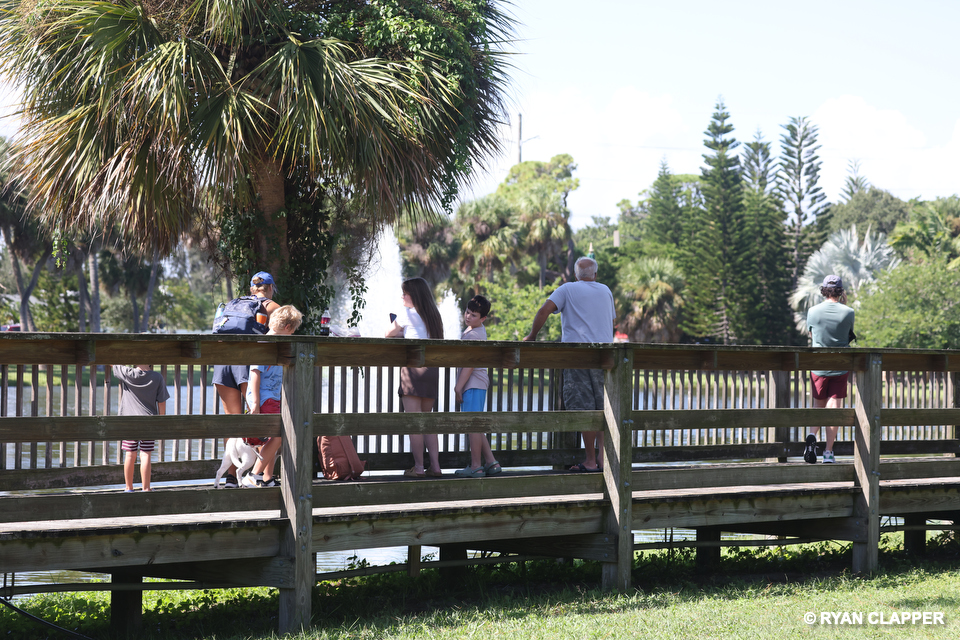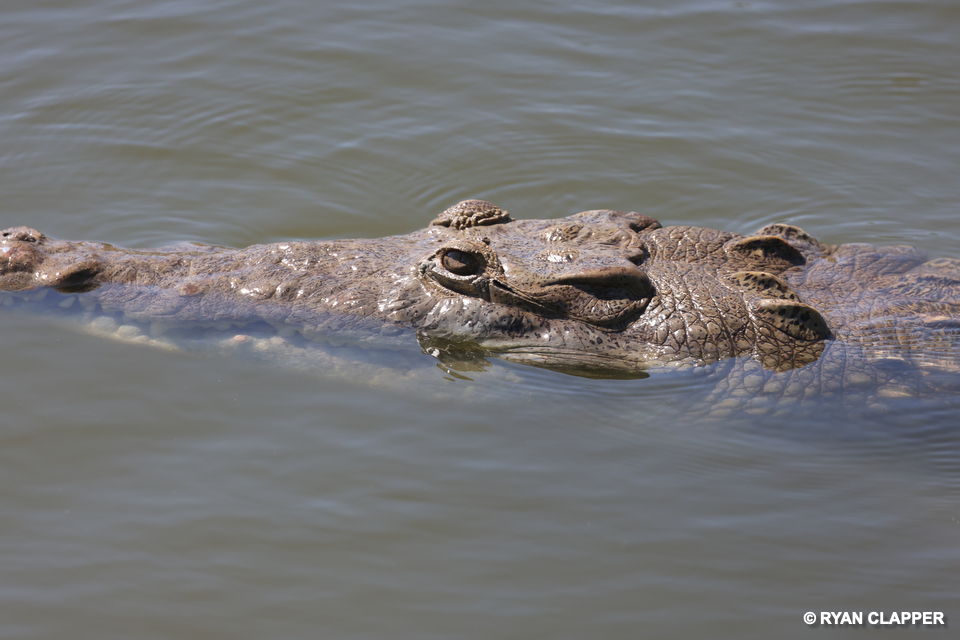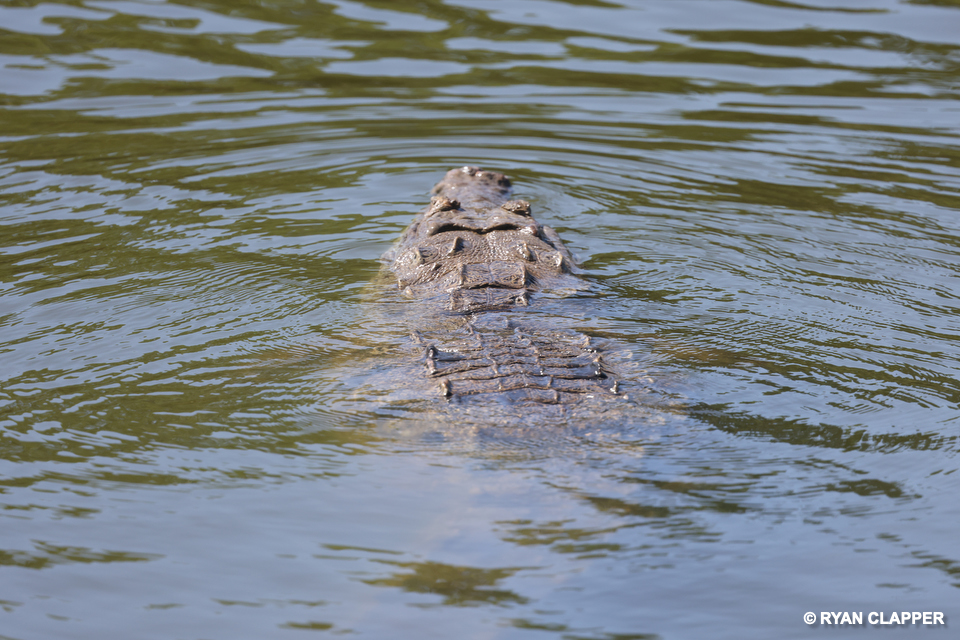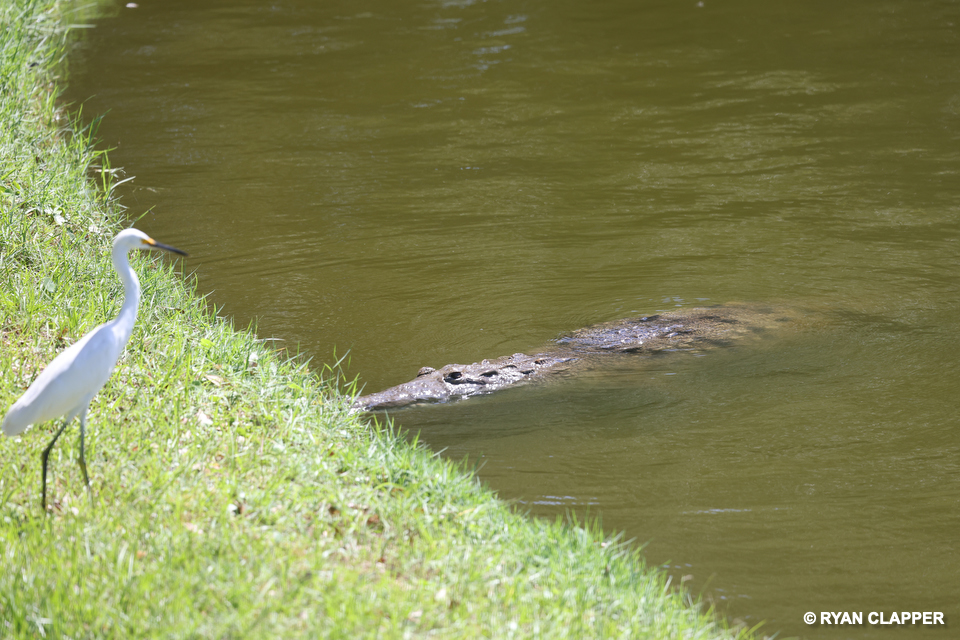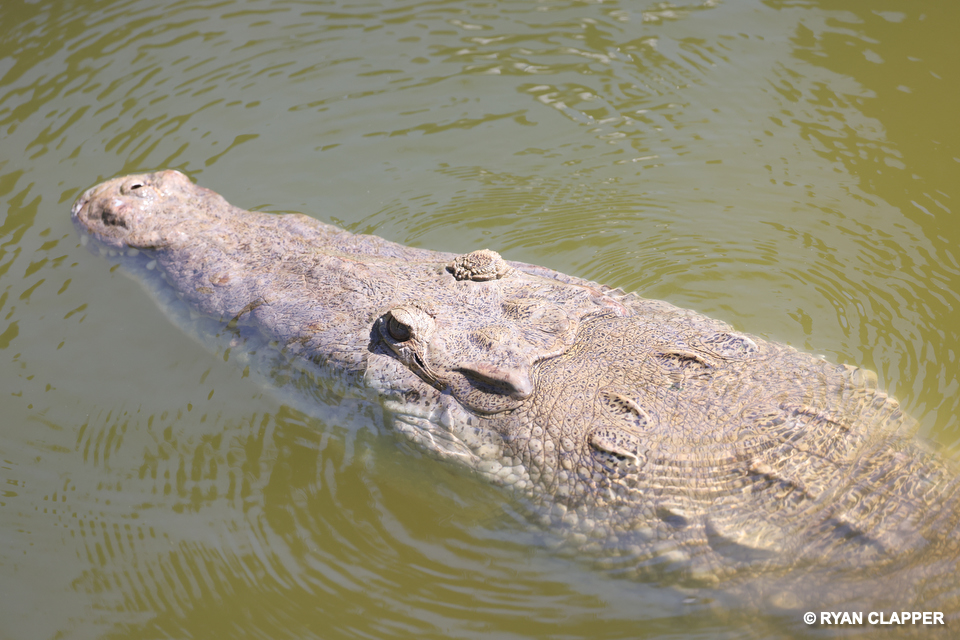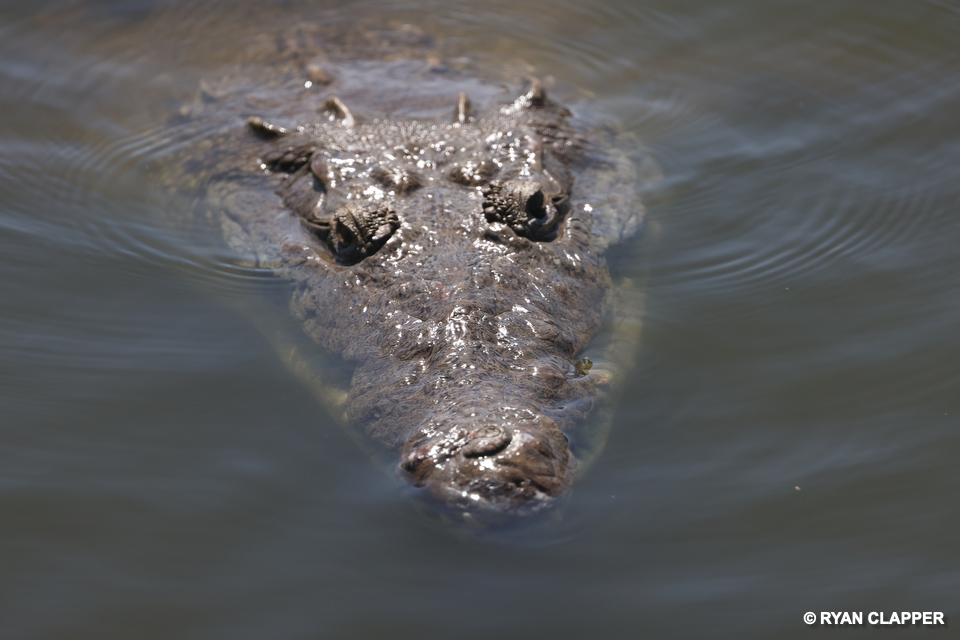By CAM Staff
October 8, 2025, something both astounding and unnerving occurred: a crocodile was confirmed by the FWC at Gleason Park, Indian Harbour Beach. Local chatter and social media buzz suggest that this reptile—long thought to be confined to South Florida’s brackish waterways—is pushing further north than ever before.
A Surprising Sighting at Gleason Park Indian Harbour Beach, FL
Gleason Park, a green oasis with a big pond and walking trails, is not somewhere most people expect to see a crocodile.Reports emerged of a crocodile lurking in the park’s pond. Locals shared photos and accounts of a large reptile gliding just below the water’s surface, eliciting wide disbelief and concern.
While some skeptics initially suspected misidentification (alligators are common in Florida), several witnesses noted the elongated, tapering snout and the way its teeth showed when its mouth was closed — features more characteristic of crocodiles than alligators.
The Gleason Park croc marks one of the most extreme northern incursions of a crocodile in Florida’s recent history — a data point in the growing body of evidence that crocodiles are expanding their range.
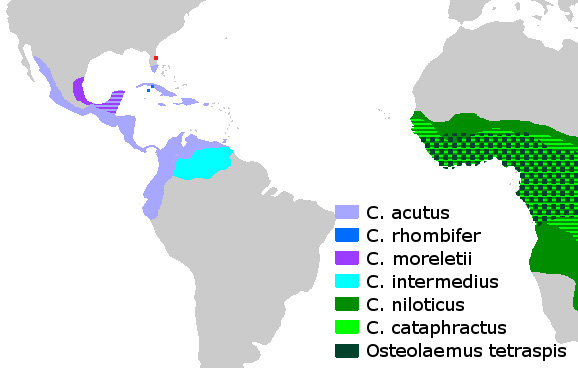
From the Everglades to Suburbia: Why Crocs Are Venturing North
Historically, American crocodiles (Crocodylus acutus) were mostly confined to South Florida’s mangrove estuaries, coastal brackish zones, and select islands. But recent decades have shown a slow, creeping shift northward.
According to National Geographic, verified crocodile sightings north of their traditional southern range have increased, suggesting that these reptiles may be reclaiming parts of territory they once inhabited. National Geographic
There are a few key reasons scientists believe this is happening:
- Population recovery. Once on the brink of local extinction, crocodile populations in Florida have rebounded thanks to legal protection, habitat restoration, and conservation efforts. Source: Florida Weekly Naples
- Warmer waters and shifting ecosystems. As Florida’s coastal waters warm (a result of climate change), mangroves and brackish zones are encroaching further north, creating niches crocodiles can exploit. Source: National Geographic
- Urban waterways and canal networks. Florida’s dense network of canals, artificial lakes, and connected waterways provides corridors for crocodiles (and other aquatic species) to move stealthily through developed areas. Scientists are now tagging crocodiles to track how they navigate urban landscapes.Mongabay
- Changing habitat preferences. Crocodiles tend to prefer brackish or salt-influenced waters rather than pure freshwater. As coastal and estuarine areas shift with sea-level rise, crocodiles may explore further inland to find suitable habitats. Source: Sanibel-Captiva Conservation Foundation
One high-profile example comes from Brevard County, where an 8-foot crocodile was spotted relaxing on a beach well north of its usual territory — far from where crocodiles had commonly been documented. FOX 13 Tampa Bay
Meanwhile, wildlife authorities in Florida have started outfitting about 15 crocodiles with satellite transmitters to better understand their movement patterns in urban and semi-urban settings.Mongabay
What This Means for Communities
For people living further north in Florida, these northern excursions are both fascinating and cause for caution. Crocodile-human conflicts are extremely rare, but as territories overlap more, encounters may increase.
Precautionary steps to reduce risk:
- Stay alert near ponds, canals, and park waterways, especially at dawn, dusk, or night when crocodiles may travel.
- Keep pets and small children away from the water’s edge.
- Never feed crocodiles (or any wildlife) — this can erode their natural wariness of humans.
- Report suspicious sightings to wildlife authorities so they can respond and assess the risk.
Looking Forward: A New Map for Crocs?
If the Gleason Park sighting is verified, it’s a vivid symbol of a shifting landscape — one where crocodiles reclaiming old ground (or exploring new) are no longer just a story in South Florida but an evolving chapter in Florida’s wildlife narrative.
FWC will be watching closely to see if the relocated croc found at Gleason Parkcomes back — or if more show up nearby. Either way, it’s a reminder that Florida’s resilient and ancient reptiles may yet surprise us again.
Catching a croc
